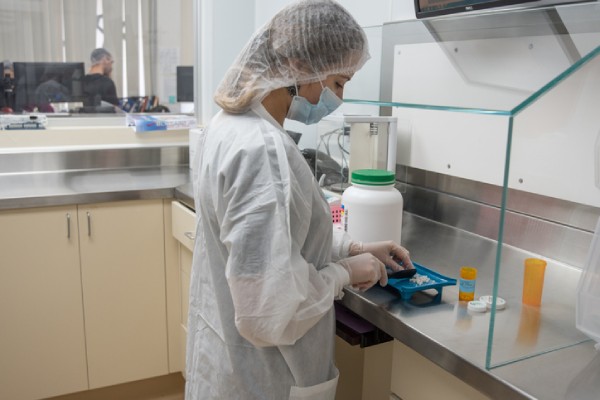In the ever-evolving landscape of healthcare, where each patient’s needs become more unique, the art of compounding pharmacy stands out as a beacon of personalized care. But what exactly guides the delicate process of creating customized medication?
This article dives deep into the compounding pharmacy regulations, laws, and policies in Canada, ensuring that each concoction not only meets individual health requirements but also aligns perfectly with stringent regulatory standards.
If you’ve ever wondered how these specialized pharmacies operate within the law or the standards they must meet, read on to uncover these critical details.
What Is Medication Compounding?
Compounding is the meticulous process of creating medications tailored to the specific needs of a patient.
This craft involves the precise mixing of ingredients in exact amounts to fit the unique requirements of an individual, which standard pharmacies, with their focus on mass-produced medications, cannot always accommodate.
This practice allows for personalized treatment plans that can include altering the form of a medication (such as turning a pill into a liquid), removing non-essential ingredients that patients may be allergic to, or combining several medications into a single dose.

What Is Compounding Pharmacy?
At its core, a compounding pharmacy plays a critical role in healthcare by customizing medications to suit individual patient needs, thereby enhancing therapeutic outcomes.
Unlike conventional pharmacies, compounding pharmacies use specialized techniques and equipment to create medications that are not available off the shelf.
This could be due to patient allergies, or pediatric dosage requirements.
PharmaChoice Canada takes pride in its network of independent pharmacies that are dedicated to patient well-being through personalized pharmaceutical care.
Many of our Member-owned pharmacies are equipped with the tools and expertise necessary to formulate and compound medications that adhere to the highest standards of safety and efficacy.
Compound Pharmacy vs Regular Pharmacy – Key Differences
- Regulatory Variances: Compounding pharmacies must follow stringent guidelines regarding the sourcing of ingredients, the compounding environment, and the qualifications of the staff involved, all to maintain high standards of product quality and patient safety.
- Medication Customization: Regular pharmacies typically dispense mass-produced medications. In contrast, compounding pharmacies specialize in creating customized medications based on individual prescriptions.
- Patient-Centric Approach: While regular pharmacies provide general services to the mass public, compounding pharmacies take this a step further, focusing on personalized patient care, and tailoring their services to individual needs.
- Scope of Services: Compounding pharmacies offer a broader scope of services compared to regular pharmacies, such as producing allergy-friendly formulations free of gluten, lactose, or specific dyes and preservatives, which are crucial for patients with sensitive health conditions.
- Expertise and Training: Compounding pharmacists undergo specialized training to handle complex compounding processes, which is distinct from the training regular pharmacists receive. This training covers areas such as chemical compatibility, the stability of compounded formulations, and advanced techniques for ensuring that each compound maintains its desired efficacy and safety profile.
Who Regulates Compounding Pharmacies?
In Canada, provincial regulatory bodies, often referred to as Colleges, are tasked with overseeing compounding pharmacies.
These institutions ensure that practices align with the national standards set forth by the National Association of Pharmacy Regulatory Authorities (NAPRA).
Each pharmacy under the PharmaChoice Canada banner rigorously adheres to these guidelines, demonstrating a commitment to compliance and high-quality standards across all operations.
Do Compounding Pharmacies Follow The Same Regulations as Drug Manufacturers?
Compounding pharmacies operate under a very different regulatory framework compared to traditional drug manufacturers.
While drug manufacturers are responsible for producing large volumes of standardized medications under federal guidelines, compounding pharmacies focus on custom-making medications to meet specific patient needs, and are governed by a distinct set of provincial and national regulations.
These regulations for compounding pharmacies are meticulously designed to ensure the precision, safety, and efficacy of medications tailored to individual prescriptions.
They require detailed documentation, stringent quality control measures, and specific environmental conditions to prevent contamination and ensure the stability of compounded medications.
This approach allows compounding pharmacies to adapt quickly to the unique requirements of patients without the extensive scale and infrastructure needed for mass drug manufacturing.

Compounding Pharmacy Regulations in Canada
In Canada, the landscape of compounding pharmacy regulations is detailed and robust, guided by the principles set out by NAPRA, comprised of three model standards including:
- Non-sterile preparations
- Hazardous sterile preparations
- Non-hazardous sterile preparations
These guidelines ensure that medications are compounded safely, effectively, and hygienically, safeguarding patient health while accommodating their unique medical needs.
Non-Sterile Preparations
NAPRA’s model standards for pharmacy compounding of non-sterile preparations emphasize the importance of quality assurance processes.
These standards ensure that pharmacies engaged in non-sterile compounding have the necessary procedures in place to prevent contamination, maintain dosage consistency, and ensure the stability of their preparations.
Pharmacies must also implement appropriate sanitation protocols and conduct regular staff training to uphold these standards.
Hazardous Sterile Preparations
The standards for hazardous sterile preparations outline strict protocols to manage risks associated with handling potent and dangerous substances.
These include specialized equipment, dedicated facilities, and rigorous personnel training to prevent cross-contamination and exposure.
Non-Hazardous Sterile Preparations
Non-hazardous sterile preparations also follow stringent guidelines. These standards focus on maintaining sterility throughout the compounding process, requiring cleanrooms or other controlled environments, and advanced filtration systems to ensure that the final medications are free from microbial contamination.
PharmaChoice Canada – Your Ultimate Pharmacy Partner
This exploration into the compounding pharmacy landscape in Canada reveals a world of meticulous care tailored to individual needs, regulated to ensure safety and efficacy.
If you’re ready to step into the world of personalized pharmacy care with a compounding pharmacy, contact PharmaChoice Canada today to discover how our program can support your pharmacy’s success.
Compounding Pharmacy FAQs
How do I know if my prescription should be filled at a compounding pharmacy or a regular pharmacy?
Your healthcare provider will recommend a compounding pharmacy if your medication needs customization that a regular pharmacy cannot provide.
Are compounded medications covered by insurance?
Coverage for compounded medications varies by insurance plan and patient needs. Patients should consult their insurance provider for specific coverage details.
Does a Compounding Pharmacist Need To Have Special Training?
Yes, compounding pharmacists must possess specialized training to prepare complex formulations safely and effectively.






